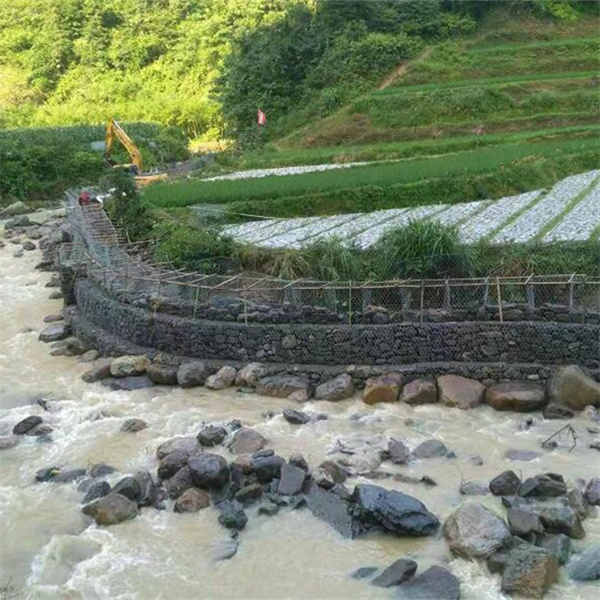Nov . 09, 2024 10:46 Back to list
Choosing the Right Gabion Box Size for Your Project Needs
Exploring the Best Gabion Box Sizes for Your Project
Gabion boxes are becoming increasingly popular in landscaping, erosion control, and construction. These wire mesh containers filled with rocks or other materials offer a durable and eco-friendly solution for a range of applications. However, choosing the right gabion box size is crucial for the effectiveness of your project. In this article, we will explore the various sizes of gabion boxes available and help you identify which one is best suited for your needs.
What are Gabion Boxes?
Before diving into sizes, let’s quickly cover what gabion boxes are. Essentially, a gabion box is a cage or container made of galvanized steel or PVC-coated wire mesh, filled with natural stones or rocks. They have been used for decades in various civil engineering projects, but their versatility has led to their adoption in landscaping, garden design, and DIY projects as well.
Common Gabion Box Sizes
Gabion boxes come in different dimensions to accommodate various requirements. Common sizes include
1. 2’ x 2’ x 3’ (0.6m x 0.6m x 0.9m) 2. 2’ x 4’ x 3’ (0.6m x 1.2m x 0.9m) 3. 3’ x 3’ x 3’ (0.9m x 0.9m x 0.9m) 4. 3’ x 6’ x 3’ (0.9m x 1.8m x 0.9m) 5. 4’ x 4’ x 4’ (1.2m x 1.2m x 1.2m)
These dimensions are not exhaustive, as manufacturers often provide custom sizes to fit specific project needs.
Factors to Consider When Choosing Gabion Box Sizes
1. Purpose of the Project Determine what you intend to achieve with the gabion boxes. For instance, if you're aiming for simple decorative landscaping, smaller sizes may suffice. However, for retaining walls or significant erosion control, larger boxes will likely be more effective.
2. Site Conditions Evaluate the conditions of the site where the gabion boxes will be installed. If the area is prone to heavy water flow or potential landslides, opting for larger sizes that provide more mass and stability is advisable.
buy gabion box sizes

3. Aesthetic Appeal If you're using gabion boxes for landscaping purposes, consider how their size will affect the overall appearance of the space. Larger boxes can serve as focal points, while smaller ones may blend in better with plants and other landscape elements.
4. Material Availability The choice of rocks or stones to fill your gabion boxes also influences the size. Ensure that the material you plan to use fits well within the selected gabion box dimensions.
5. Transport and Installation Larger gabion boxes can be more cumbersome to transport and install. If you're planning a DIY project, consider the feasibility of handling bigger boxes or whether breaking the project into smaller, manageable components would be better.
Popular Applications for Gabion Boxes
Gabion boxes have diverse applications that vary based on their sizes
- Erosion Control Larger boxes can effectively manage water flow and prevent soil loss along riverbanks and shorelines. - Retaining Walls For stability, larger gabion boxes are ideal for constructing retaining walls as they provide the necessary weight and firmness.
- Garden Beds Smaller gabion boxes can function as unique garden beds, offering a rustic aesthetic while allowing for adequate drainage.
- Fencing and Privacy Screens Medium-sized gabion boxes can be stacked to create attractive, sturdy fences or privacy screens in outdoor spaces.
Conclusion
Choosing the right gabion box size is essential for the success of your project, whether it's for structural purposes or aesthetic appeal. By considering the factors mentioned above, you can select the perfect size that aligns with your goals and site conditions. With gabion boxes becoming a staple in modern landscaping and engineering, the right choice will not only enhance the beauty of your space but will also ensure the longevity and effectiveness of your project. Happy building!
-
Why PVC Coated Gabion Mattress Is the Best Solution for Long-Term Erosion Control
NewsMay.23,2025
-
Gabion Wire Mesh: The Reinforced Solution for Modern Construction and Landscape Design
NewsMay.23,2025
-
Gabion Wall: The Flexible, Seismic-Resistant Solution for Modern Landscaping and Construction
NewsMay.23,2025
-
Gabion Wall Solutions: The Durable, Decorative, and Affordable Choice for Every Landscape
NewsMay.23,2025
-
Gabion Basket: The Durable and Flexible Alternative to Traditional Retaining Walls
NewsMay.23,2025
-
Gabion Basket: The Proven Solution for Slope Stability and Flood Control
NewsMay.23,2025
-
Versatility of Chain Link Fence Gabion
NewsMay.13,2025






